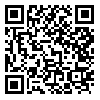BibTeX | RIS | EndNote | Medlars | ProCite | Reference Manager | RefWorks
Send citation to:
URL: http://jhsw.tums.ac.ir/article-1-5856-en.html

 , Farideh Golbabaei *
, Farideh Golbabaei * 
 2, Parvin Nasiri3
2, Parvin Nasiri3 
 , Kamal Azam4
, Kamal Azam4 
 , Somayeh Farhang Dehghan5
, Somayeh Farhang Dehghan5 
 , Asad Fathi1
, Asad Fathi1 
 , Faezeh Darabi6
, Faezeh Darabi6 

2- Professor, Department of Occupational Health, , School of Public Health, Tehran University of Medical Sciences, Tehran, Iran ,
3- Professor, Department of Occupational Health, , School of Public Health, Tehran University of Medical Sciences, Tehran, Iran
4- Associate Professor, Department of Epidemiology and Biostatistics, School of Public Health, Tehran University of Medical Sciences, Tehran, Iran
5- Assistant Professor, Department of Occupational Health, School of Public Health, Shahid Beheshti University of Medical Sciences, Tehran, Iran
6- M.Sc., Department of Occupational Health, School of Public Health, Shiraz University of Medical Sciences, Shiraz, Iran
Introduction: Heat stress is one of the hazardous agents in the steel industries which can threaten the health and safety of workers and lead to serious occupational diseases. The aim of the study was to assess the heat stress in the steel industries and compare PHS (Physiological Strain Index), WBGT (Wet-Bulb Globe Temperature), DI (Discomfort Index) and HSI (Heat Stress Index) indices for the estimation of heat stress and to determine the optimum index for steel industries.
Material and Method: This descriptive-analytic study was conducted among 220 workers engaged in two steel industries in Iran. Environmental and physiological parameters were measured according to ISO 7726 and ISO 9886 in three times of measurement, and finally the time-weight average of the heat stress indices were calculated. All data were analyzed using SPSS ver. 20.
Result: The time-weight average of WBGT (28.28 oC), DI (29.11 oC), HIS (65.7 %) indices were higher than the recommended limits. Physiological parameters (oral, tympanic and skin temperatures, systolic and diastolic pressures and heart rate) had the greatest value in the second time of measurement (afternoon). WBGT index comparing to the PHS, DI and HSI indices had highest correlation with oral, tympanic and skin temperatures and heartbeat (r=0.314 , 0.408 , 0.459 , 0.302, respectively; P < 0.05), while systolic and diastolic blood pressures showed no significant correlation with WBGT (P > 0.05). The WBGT index had the highest correlation with studied indices which was 0.945, 0.681 and 0.600 for DI, PHS and HSI, respectively.
Conclusion: This study assessed the optimal index with regard to the physiological parameters, and it was concluded that the WBGT index has the highest correlation with the most of physiological parameters, and therefore, WBGT index can be the most optimum index to heat stress assessment in the studied steal industries.
Received: 2018/06/22 | Accepted: 2018/06/22 | Published: 2018/06/22
| Rights and permissions | |
 |
This work is licensed under a Creative Commons Attribution-NonCommercial 4.0 International License. |



